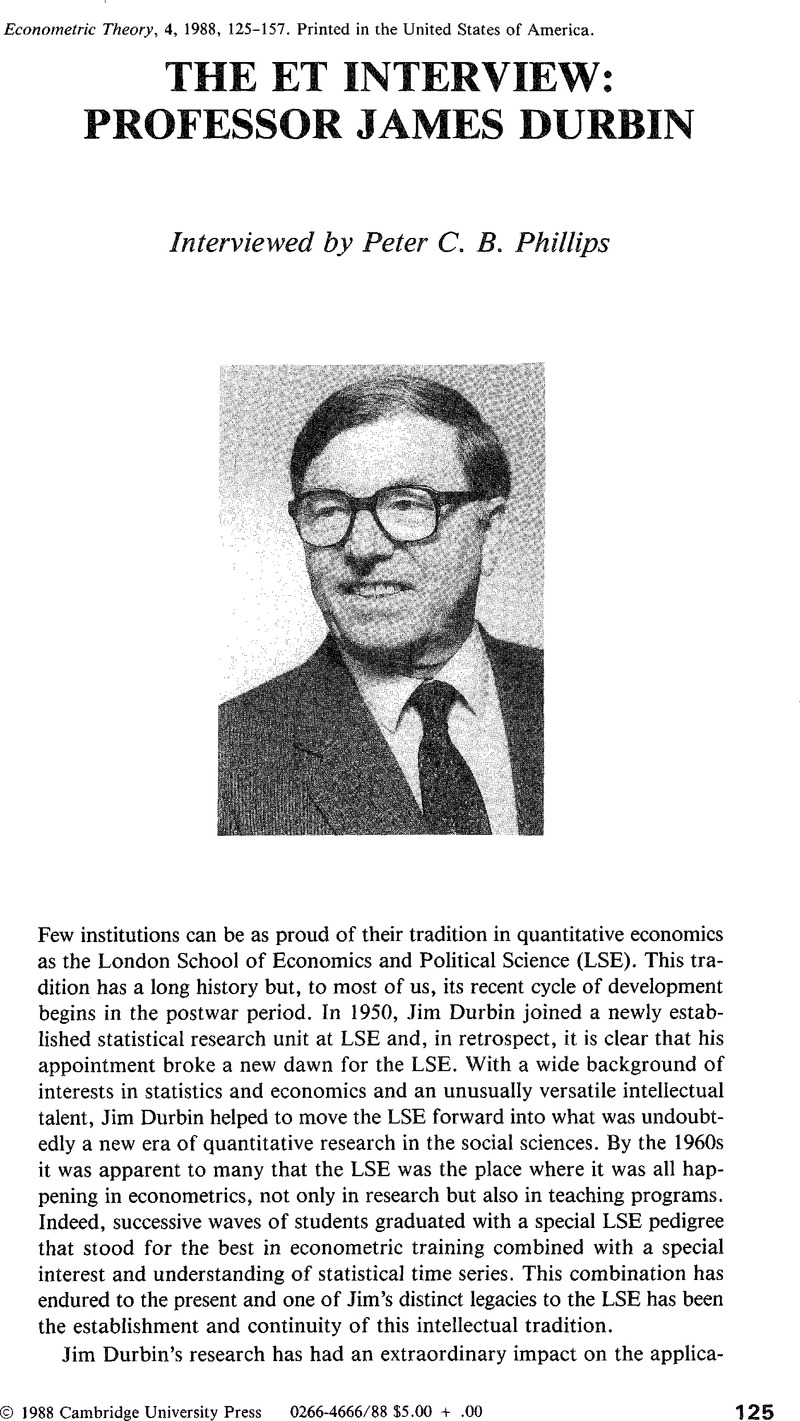Crossref Citations
This article has been cited by the following publications. This list is generated based on data provided by Crossref.
PHILLIPS, P.C.B.
1988.
Reflections on Econometric Methodology*.
Economic Record,
Vol. 64,
Issue. 4,
p.
344.
King, Maxwell L.
1992.
Breakthroughs in Statistics.
p.
229.
MacKinnon, James G.
and
Smith, Anthony A.
1998.
Approximate bias correction in econometrics.
Journal of Econometrics,
Vol. 85,
Issue. 2,
p.
205.
Aldrich, John
2010.
The Econometricians' Statisticians, 1895–1945.
History of Political Economy,
Vol. 42,
Issue. 1,
p.
111.
Phillips, Peter C. B.
2010.
Folklore Theorems, Implicit Maps and New Unit Root Limit Theory.
SSRN Electronic Journal,
Spanos, Aris
2014.
Reflections on the LSE Tradition in Econometrics: a Student’s Perspective.
OEconomia,
p.
343.
2016.
A Panorama of Statistics.
p.
197.
Backhouse, Roger E.
and
Cherrier, Béatrice
2017.
“It’s Computers, Stupid!” The Spread of Computers and the Changing Roles of Theoretical and Applied Economics.
History of Political Economy,
Vol. 49,
Issue. Supplement,
p.
103.
2018.
Linear Models and Time‐Series Analysis.
p.
825.
Spanos, Aris
2018.
MIS‐SPECIFICATION TESTING IN RETROSPECT.
Journal of Economic Surveys,
Vol. 32,
Issue. 2,
p.
541.
Thomas, Jim
2019.
The Palgrave Companion to LSE Economics.
p.
3.
Harvey, Andrew
and
Bartholomew, David
2019.
The Palgrave Companion to LSE Economics.
p.
631.



